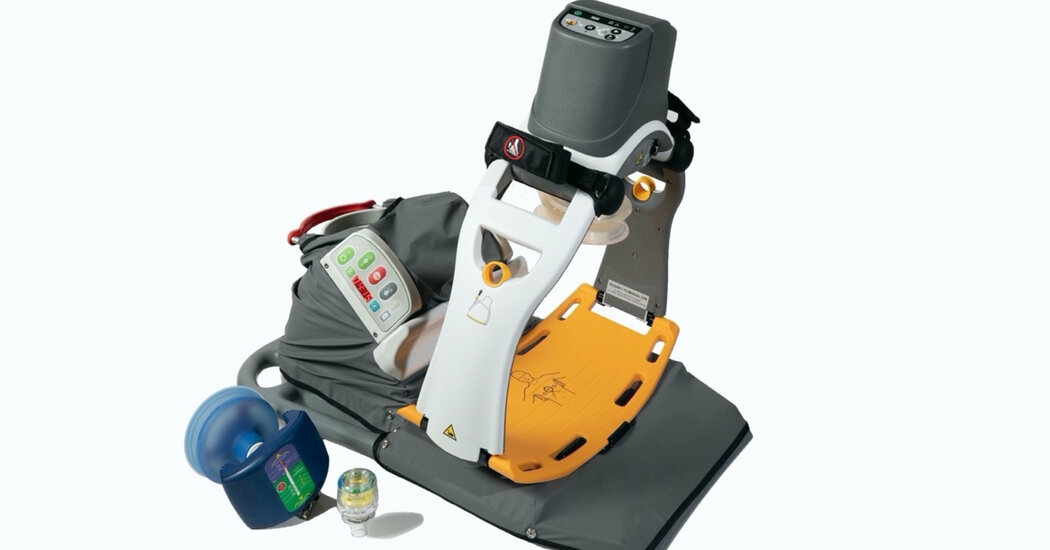In 1988, a 65-year-old man’s heart stopped at home. His wife and son had no CPR, so in desperation they grabbed a toilet plunger to start his heart until an ambulance showed up.
Later, after the man recovered at San Francisco General Hospital, his son gave the doctors there some advice: Place toilet plungers next to all beds in the coronary ward.
The hospital didn’t, but the idea got doctors thinking about better ways to resuscitate, or cardiopulmonary resuscitation, the conventional method of chest compressions after cardiac arrest. More than three decades later, at a meeting of emergency medical services directors this week in Hollywood, Fla.
Traditional CPR doesn’t have a great track record: On average, only 7 percent of people who receive it before going to the hospital end up being discharged with full brain function, according to a national registry of cardiac arrests treated by medical providers in communities across the country. country.
“It’s appalling,” said Dr. Keith Lurie, a cardiologist at the University of Minnesota Medical School who treated the plunger patient in 1988.
The new procedure, known as neuroprotective resuscitation, has three components. First, a silicone plunger forces the chest up and down, not only pushing blood out to the body, but drawing it back in to fill the heart. A plastic valve fits over a face mask or breathing tube to regulate the pressure in the lungs.
The third piece is a body positioning device sold by AdvancedCPR Solutions, an Edina, Minnesota firm founded by Dr. Lurie. A hinged support slowly raises a supine patient to a partially seated position. This allows deoxygenated blood in the brain to be drained more effectively and replenished more quickly with oxygenated blood.
The three pieces of equipment, which fit in a backpack, cost about $20,000 and can be used for several years. The devices are individually approved by the Food and Drug Administration.
About four years ago, researchers began studying the combination of all three devices used together. At this week’s meeting, Dr. Paul Pepe, a longtime resuscitation researcher and the director of the Dallas County emergency medical services, reported the results of 380 patients who could not be resuscitated by defibrillation, making their chances of survival extremely bleak. Of those who received the new method of CPR within 11 minutes of cardiac arrest, 6.1 percent survived with intact brain function, compared to just 0.6 percent who received traditional CPR.
He also reported significantly better odds for a subgroup of patients who had no heartbeat but had random electrical activity in their heart muscle. The typical survival rate for people in those conditions is about 3 percent. But the patients in Dr. Pepe who underwent neuroprotective resuscitation had a 10 percent chance of leaving the hospital neurologically intact.
Last year, a study in four states found similar results. Patients who received neuroprotective CPR within 11 minutes of a 911 call were about three times as likely to survive with good brain function as those who received conventional CPR.
“This is the right thing to do,” said Dr. Pepe.
A few years ago, Jason Benjamin went into cardiac arrest after training at a gym in St. Augustine, Fla. A friend took him to a nearby fire station, where trained workers used the neuroprotective resuscitation equipment. It took 24 minutes and multiple defibrillations to resuscitate him.
After he recovered, Mr. Benjamin, himself a former emergency room technician, was stunned when he learned about the new approach that had saved his life. He read the studies and interviewed Dr. Lurie. The three-part procedure had several complicated names at the time. It was Mr. Benjamin who coined the term neuroprotective resuscitation “because that’s what it does,” recalled Mr. Benjamin himself, adding that “the focus was on protecting my brain.”
Dr. Karen Hirsch, a neurologist at Stanford University and a member of the American Heart Association’s CPR standards committee, said the new approach made interesting and physiological sense, but that the committee needed more research on patients before formally recommending it as a treatment option.
“We are limited by the available data,” she said, adding that the committee would like to see a clinical trial in which people undergoing cardiac arrest are randomly assigned to either conventional resuscitation or neuroprotective resuscitation. Such trials do not take place in the United States.
Dr. Joe Holley, the medical director of the emergency medical service serving Memphis and several surrounding communities, is not waiting for a bigger trial. Two of his teams, he said, got neurologically intact survival rates of about 7 percent with conventional CPR. With neuroprotective resuscitation, the rates rose to about 23 percent.
His crews also return from emergency calls much happier these days, and patients even show up at fire stations to thank them for their help.
“That was a rare occurrence,” said Dr. Holley. “Now it’s almost normal.”

